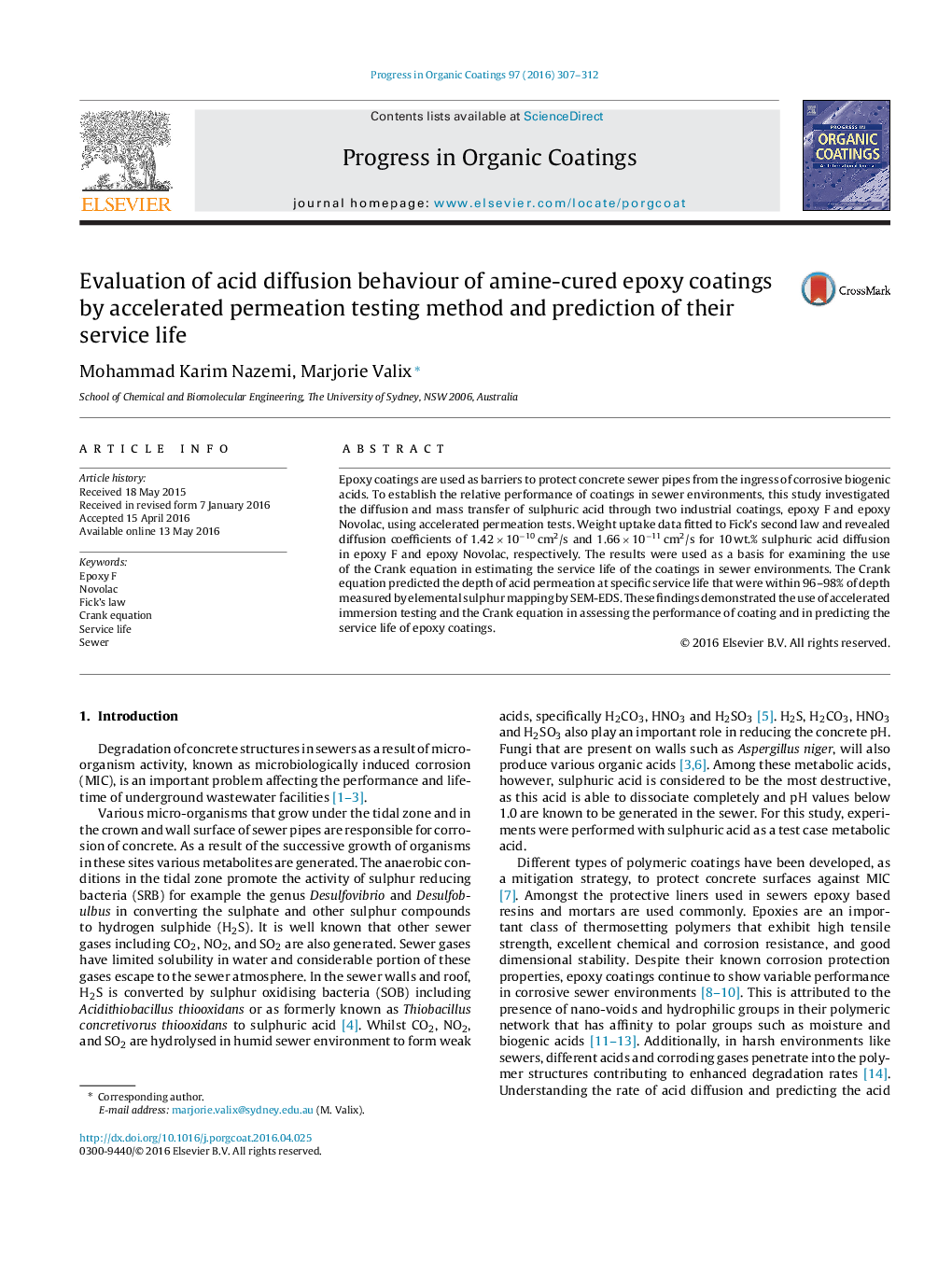| Article ID | Journal | Published Year | Pages | File Type |
|---|---|---|---|---|
| 692160 | Progress in Organic Coatings | 2016 | 6 Pages |
•Mass transfer of sulphuric acid through epoxy coatings is investigated using accelerated permeation tests.•The use of accelerated permeation test and Fick’s law in determining epoxy coatings diffusion coefficient is demonstrated.•Acid penetration depth was predicted by Crank equation and verified by SEM-EDS analysis.•The results indicated that the Crank model is a useful tool for predicting the service life of epoxy coatings.
Epoxy coatings are used as barriers to protect concrete sewer pipes from the ingress of corrosive biogenic acids. To establish the relative performance of coatings in sewer environments, this study investigated the diffusion and mass transfer of sulphuric acid through two industrial coatings, epoxy F and epoxy Novolac, using accelerated permeation tests. Weight uptake data fitted to Fick’s second law and revealed diffusion coefficients of 1.42 × 10−10 cm2/s and 1.66 × 10−11 cm2/s for 10 wt.% sulphuric acid diffusion in epoxy F and epoxy Novolac, respectively. The results were used as a basis for examining the use of the Crank equation in estimating the service life of the coatings in sewer environments. The Crank equation predicted the depth of acid permeation at specific service life that were within 96–98% of depth measured by elemental sulphur mapping by SEM-EDS. These findings demonstrated the use of accelerated immersion testing and the Crank equation in assessing the performance of coating and in predicting the service life of epoxy coatings.
Graphical abstractFigure optionsDownload full-size imageDownload as PowerPoint slide
